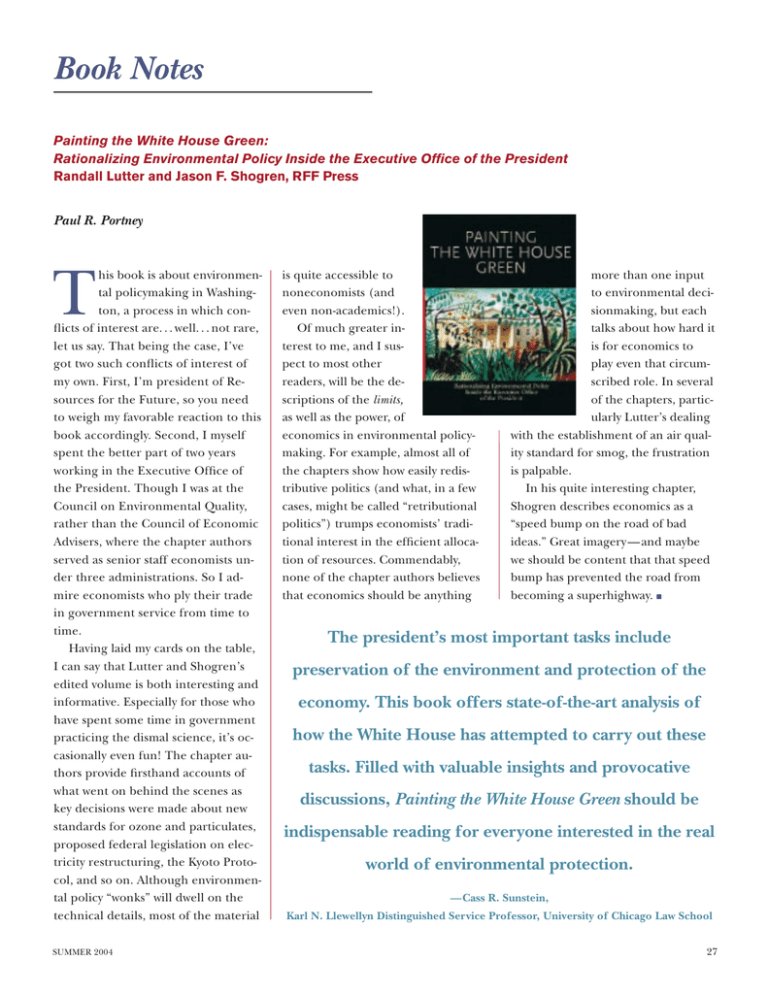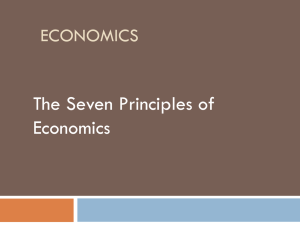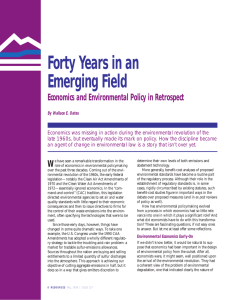T Book Notes
advertisement

Book Notes Painting the White House Green: Rationalizing Environmental Policy Inside the Executive Office of the President Randall Lutter and Jason F. Shogren, RFF Press Paul R. Portney T his book is about environmental policymaking in Washington, a process in which conflicts of interest are. . . well. . . not rare, let us say. That being the case, I’ve got two such conflicts of interest of my own. First, I’m president of Resources for the Future, so you need to weigh my favorable reaction to this book accordingly. Second, I myself spent the better part of two years working in the Executive Office of the President. Though I was at the Council on Environmental Quality, rather than the Council of Economic Advisers, where the chapter authors served as senior staff economists under three administrations. So I admire economists who ply their trade in government service from time to time. Having laid my cards on the table, I can say that Lutter and Shogren’s edited volume is both interesting and informative. Especially for those who have spent some time in government practicing the dismal science, it’s occasionally even fun! The chapter authors provide firsthand accounts of what went on behind the scenes as key decisions were made about new standards for ozone and particulates, proposed federal legislation on electricity restructuring, the Kyoto Protocol, and so on. Although environmental policy “wonks” will dwell on the technical details, most of the material SUMMER 2004 is quite accessible to noneconomists (and even non-academics!). Of much greater interest to me, and I suspect to most other readers, will be the descriptions of the limits, as well as the power, of economics in environmental policymaking. For example, almost all of the chapters show how easily redistributive politics (and what, in a few cases, might be called “retributional politics”) trumps economists’ traditional interest in the efficient allocation of resources. Commendably, none of the chapter authors believes that economics should be anything more than one input to environmental decisionmaking, but each talks about how hard it is for economics to play even that circumscribed role. In several of the chapters, particularly Lutter’s dealing with the establishment of an air quality standard for smog, the frustration is palpable. In his quite interesting chapter, Shogren describes economics as a “speed bump on the road of bad ideas.” Great imagery — and maybe we should be content that that speed bump has prevented the road from becoming a superhighway. ■ The president’s most important tasks include preservation of the environment and protection of the economy. This book offers state-of-the-art analysis of how the White House has attempted to carry out these tasks. Filled with valuable insights and provocative discussions, Painting the White House Green should be indispensable reading for everyone interested in the real world of environmental protection. —Cass R. Sunstein, Karl N. Llewellyn Distinguished Service Professor, University of Chicago Law School 27






